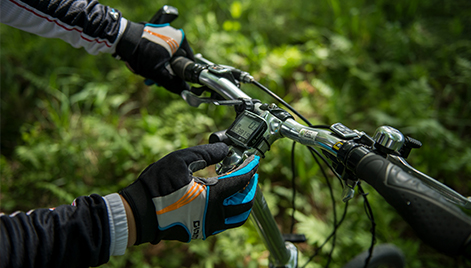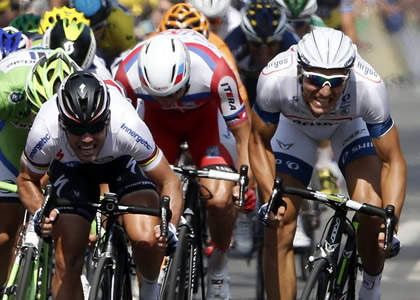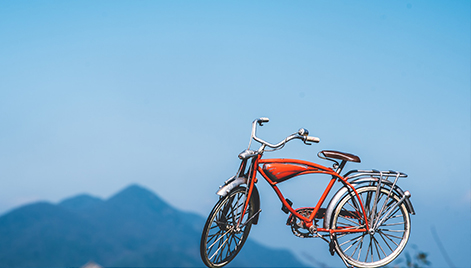The bicycle water bottle is mainly made of plastic, with a triangle mark printed on the bottom, which is a symbol of plastic recycling. There are numbers from 1 to 7 in the triangle frame. Each number represents a different plastic. According to these recycling signs, you can know which resin the kettle is made of. If there are multiple ingredients, it means that it is a product. The main and basic materials. Which number is in the triangle at the bottom of your bicycle water bottle? Guangzhou Zane bicycle manufacturer brings you a detailed introduction.

This logo comes from the United States. Now this marking method has been accepted and quoted by many countries including my country. In my country, it is not mandatory for plastic products to mark the recycling mark. In order to facilitate the recycling of plastic products, some formal large-brand enterprises have recently begun to mark the recycling mark. Although this logo is mainly for recycling and reuse, we can also use this logo to know what material the plastic products used are made of and what environment should be used.
The small recycling mark on the bottom of the plastic product is like a small ID card for each plastic container. They are made of different materials and used differently.
"01"———PET (Polyethylene Terephthalate)
Mineral water bottles and carbonated beverage bottles are all made of this material. Beverage bottles cannot be recycled to hold hot water. This material is heat-resistant up to 70°C. It is only suitable for warm or frozen drinks. It is easy to deform if it is filled with high-temperature liquid or heated, and harmful substances to the human body may be dissolved. In addition, scientists have discovered that after 10 months of use, such plastic products may release carcinogens that are toxic to humans. Therefore, throw away the beverage bottles when they are used up, and do not use them as water cups or as storage containers to hold other items, so as not to cause health problems.
"02"———HDPE (High Density Polyethylene)
Plastic containers for cleaning products and bathing products, and plastic bags currently used in supermarkets and shopping malls are mostly made of this material, which can withstand a high temperature of 110 ℃, and plastic bags that indicate food can be used to hold food. Plastic containers containing cleaning supplies and bath products can be reused after careful cleaning. However, these containers are usually not easy to clean. The original cleaning supplies remain and become a breeding ground for bacteria. The cleaning is not thorough and it is best not to recycle.
"03"———PVC (Polyvinyl Chloride)
According to reports, the toxic and harmful substances that this kind of plastic products are easy to produce come from two aspects. One is the monomolecular vinyl chloride that is not fully polymerized during the production process, and the other is the harmful substances in the plasticizer. These two substances are easy to separate out when encountering high temperature and grease. After the toxic substances enter the human body with food, they are easy to cause cancer. At present, containers of this material have been less used for packaging food. If it is in use, do not let it heat up.
"04"———LDPE (Low Density Polyethylene)
Cling film, plastic film, etc. are all of this material. The heat resistance is not strong. Generally, qualified PE cling film will melt when the temperature exceeds 110°C, leaving some plastic preparations that cannot be decomposed by the human body. In addition, when food is wrapped with plastic wrap and heated, the fat in the food can easily dissolve harmful substances in the plastic wrap. Therefore, when the food is put into the microwave oven, the wrapped plastic wrap must be removed first.
"05"———PP (Polypropylene)
The microwave lunch box is made of this material, resistant to high temperatures of 130°C, and poor in transparency. This is the only plastic box that can be placed in a microwave oven and can be reused after careful cleaning. Special attention should be paid to some microwave lunch boxes. The box body is made of No. 05 PP, but the lid is made of No. 06 PS (polystyrene). PS has good transparency but is not resistant to high temperatures, so it cannot be combined with the box body. Put it in the microwave. To be safe, remove the lid of the container before putting it in the microwave.
"06"———PS (Polystyrene)
This is the material used to make bowls of instant noodle boxes and foaming fast food boxes. It is heat-resistant and cold-resistant, but cannot be placed in a microwave oven to avoid the release of chemicals due to excessive temperature. And can not be used to contain strong acids (such as orange juice), strong alkaline substances, because it will decompose polystyrene which is not good for the human body. Therefore, you should try to avoid using fast food boxes to pack hot food.
"07"———PC and other categories
PC is a material that is widely used, especially for the manufacture of baby bottles, space cups, etc., because it contains bisphenol A and is controversial. Experts point out that in theory, as long as 100% of the bisphenol A is converted into a plastic structure in the process of making PC, it means that the product is completely free of bisphenol A, let alone released. However, if a small amount of bisphenol A is not converted into the plastic structure of PC, it may be released into food or drink. Therefore, pay special attention when using this plastic container. The residual bisphenol A in PC, the higher the temperature, the more release and the faster the speed.
It can be seen from this that the PC water bottle should not be used to hold hot water. If your kettle number is 07, the following methods can reduce the risk: do not heat it when using it, and do not expose it to direct sunlight. Do not use a dishwasher or a dishwasher to clean the kettle. Before using for the first time, wash with baking soda powder and warm water, and dry naturally at room temperature. If the container has any fall or damage, it is recommended to stop using it, because if there are fine pits on the surface of the plastic product, it is easy to hide bacteria. Therefore, Guangzhou Zane bicycle manufacturer advises riders not to use aging plastic appliances.



